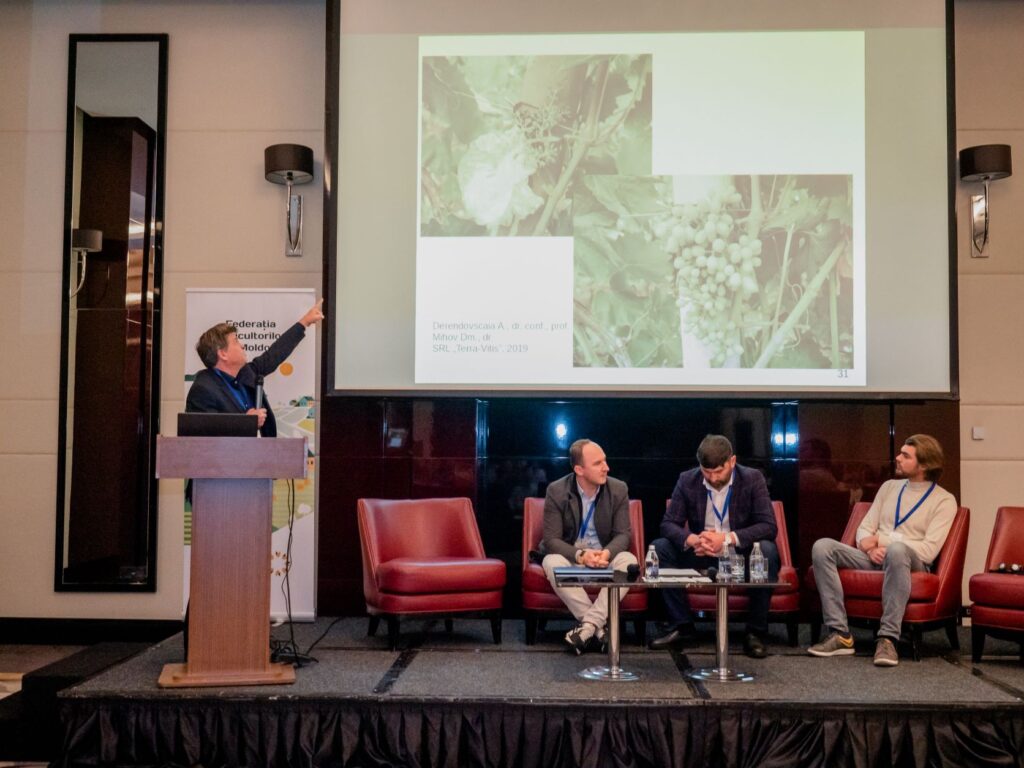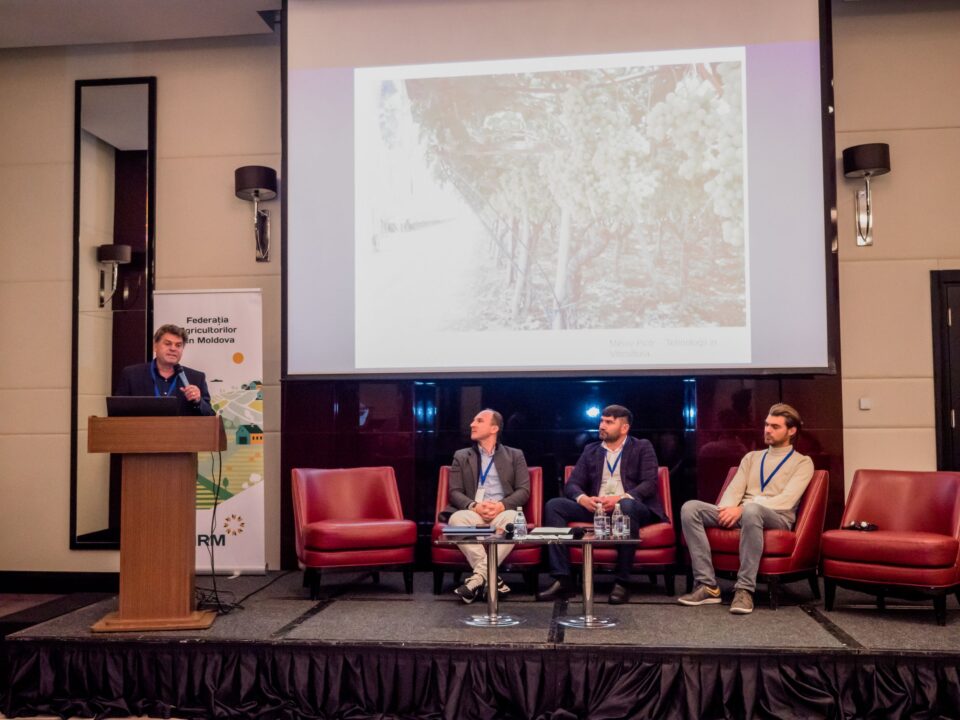As Peter Mikhov, head of the Moldovan farm TerraVitis SRL noted at the International Conference “Table Grapes of Ukraine 2022: Moldovan Experience”, the potential of viticulture in any country is largely determined by climatic conditions. Their effect can be mitigated by advanced agricultural technologies, but this is a matter of the grower’s experience, experiments, and risks.

Photo from the conference “Table grapes of Ukraine 2022: Moldovan experience”
The viticulture of the Republic of Moldova is shaped by three important factors: the sum of active temperatures is 3 000-3 250 degrees, the absolute temperature minimum is -30 degrees Celsius, and the sum of precipitation is 450-480 mm. Thus, according to Petr Mikhov, growing very late varieties of table grapes in the climatic conditions of the country is a considerable risk (TerraVitis did not have a successful experience in growing Biruintsa and Red Globe varieties, as the crop does not have time to ripen in late spring). Also, when precipitation is close to the lower limit of the specified range or less in dry seasons, high yields of good-quality table grapes cannot be obtained without irrigation. Finally, it is necessary to focus on frost-resistant varieties (for this reason the country relied on the mass commercial production of “Moldova” grapes in the late 80s).
 Photo from the conference “Table grapes of Ukraine 2022: Moldovan experience”
Photo from the conference “Table grapes of Ukraine 2022: Moldovan experience”
A decade ago, vineyard associations conducted a survey among their members, showing that about 62% of winegrowers had not decided on varieties to renew their plantations, while only 6% of them were ready to plant new vineyards of the Moldova variety. To date, the situation hasn’t changed much. Winegrowers are experimenting with amateur forms and clones of well-known varieties, trying to grow Asian and Californian varieties of table grapes in Moldova. The result is often mistakes and disappointments, but good solutions that can become commercially successful after professional refinement are also found in experiments.
“Our farm has a variety testing plot, where until recently we grew 138 varieties of table grapes, and recently planted another 50,” notes Petr Mikhov. “We have been researching their reaction to agricultural practices and holding tastings for 13 years – this is not much of a business, but a valuable experience. For example, in Costesti, where viticulture is an export-oriented business, winegrowers are not interested in exotics, but in varieties that can develop from “niche” to mass market. Of course, consumers choose with their eyes and want large and beautiful berries. But winegrowers also need a balance between a presentable appearance on the one hand, and high yield, frost and drought resistance, resistance to the most common diseases in the region, good storage, and transportability on the other. Besides, one cannot ignore the global consumer trend – seedless grape varieties. They say, be of use and carry your business on in the country where you were born. Unfortunately, seedless Californian grape varieties do not survive Moldovan winters. There is a chance to get a good harvest on closed plantations, but this is a labor-intensive job, and there is not enough labor. However, there are promising varieties of local selection: “Kish-mish Radiant”, “Aperen Rose”, “Aperen Moldovenesk”. There is also a trend of increasing popularity of white varieties among European consumers. But so far there are problems with improving their quality in the Republic of Moldova.”

Photo from the conference “Table grapes of Ukraine 2022: Moldovan experience”
According to Petr Mikhov, it is urgent to focus on the rationing of crops for the sake of higher-quality products. “The motto in the farm is: “it is better to get a crop of a tonne less than a kilogram more but of poor-quality products,” sums up the head of TerraVitis. – We carry out several stages of thinning: after overwintering, we remove weak bunches – the first bunch on the shoot is always the best, and we use the growth regulator GA3. The best load of bushes with, for example, “Moldova” grapes under irrigation is 32-35 t/ha. Otherwise, the quality suffers and there isn’t enough sugar in the berries. As a result, we are losing the market.”
The use of the site materials is free if there is a direct and open for search engines hyperlink to a specific publication of the East-Fruit.com website.




